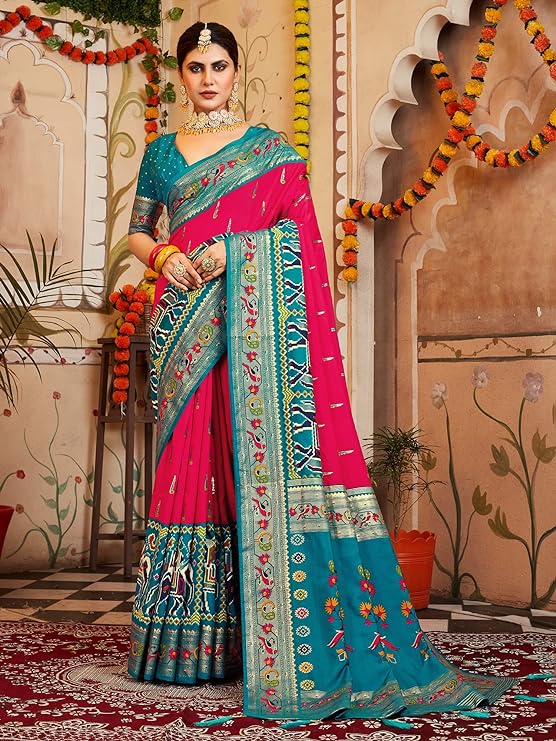
A Stylish Saree or Sari
The sari is also referred to as'saree' refers to a piece of cloth that is not stitched that typically measures 5 to 9 yards long, and worn for a basic outfit worn by Indian women. The final strip, typically larger than a meter is known as the pallu, or anchal. It is usually paired with a blouse as well as the 'Petticoat'. The Blouse typically has a figure-hugging silhouette, and usually ends above the waist, while Petticoats are primarily worn to cover the waist. Petticoat is a waist-to-floor dress that is tied around the waist with the drawstring.
History & Origin
The word'saree' comes from the Sanskrit term 'Sati' meaning 'a strip of cloth'. The clothes are now referred to as "saree" or "sari".. In the past, people of India were accustomed to wearing clothes which were draped over the body, even though they were having a good understanding of the art of weaving and sewing. One reason is that sarees were an ideal outfit for the heat in the nation. Additionally, the people would wear lengthy, unstitched pieces cloths, commonly known as loin cloths at the time that was the Indus Civilization. The loincloths were covered in the kachcha way - with the cloth draped around the waist, then which, the remainder of the cloth was placed under the legs and then tied at the back.
The Making
Saris can be hand-woven or sewn by machines, the method varying depending on the material or mix of fabrics utilized, or the kinds of embellishments that are sewn onto them. In the case of the Gadwal Saree made from Andhra Pradesh comprises an elaborate sew-up process as it's woven by hand. The fabric is initially dyed using boiling colored water. It then is dried under the shade. Then, the silk goes through the handloom.
Present Day Scenario
The Saree differs in its basic shape and design across different regions of India because of geographical influence and culture. But, in the past several decades, the sari, which was extremely comfortable, in its present form it is now being designed with modern-day styles by fashion stylists and fashion lovers. Its Lehenga Style Saree can be a prime example of this kind of innovation. It combines with the look of the Lehenga with the Saree and the pleats that the sari has while the pallu is separate draped over either shoulder. This creates an appearance that resembles the Lehenga style Sari. A Half Half sari is another modern design of the Saree and features two halves of Saree material in two different hues, often in contrasting colors. In the same way, it is the case that Kimono style sari and the Saree jumpsuits have gained popularity with fashion over the years.

Varieties & Styles
The look of a saree is a fashion that has developed over the years across different parts of India. It is possible to find many varieties of Indian saris that are based on different patterns, fabrics, weave designs, embroideries and crafts, special occasions patterns, and just about anything else that you could think of. Additionally, there are many ways to drape your clothes for each event. You can wear it with the Nivi fashion, Marathi style, Bengali style or Gujarati style, just to name several. Additionally, saris are made in a myriad of materials - such as for instance, the Banarasi Silk from Uttar Pradesh, Gadwal Saree from Andhra Pradesh as well as the Mundum Neriyutham. Additionally, from plain material and prints to various patterns and accessories, Saris are woven in many designs.
Global Appeal
Although it's a traditional dress, the sari has seen a variety of style experiments. In addition the fact that there are Bollywood models wearing the Saree during international fashion shows The sari is now in the spotlight of fashion world. In fact, foreign stars have donned the Saree during red carpet occasions.

Maintenance
Because it's woven into various fabrics that range from Silk, Crepe, Chiffon and Brocade just to mention several, the amount of maintenance needed for saris varies depending on the weave or fabric. Additionally, the quality of the embellishments can also be a factor. Sarees with a lot of stonework or cutdana for example, ought to be cleaned dry and in a professional manner. Similar to that, Crepe saris when washed should not be dried in bright sunlight.
